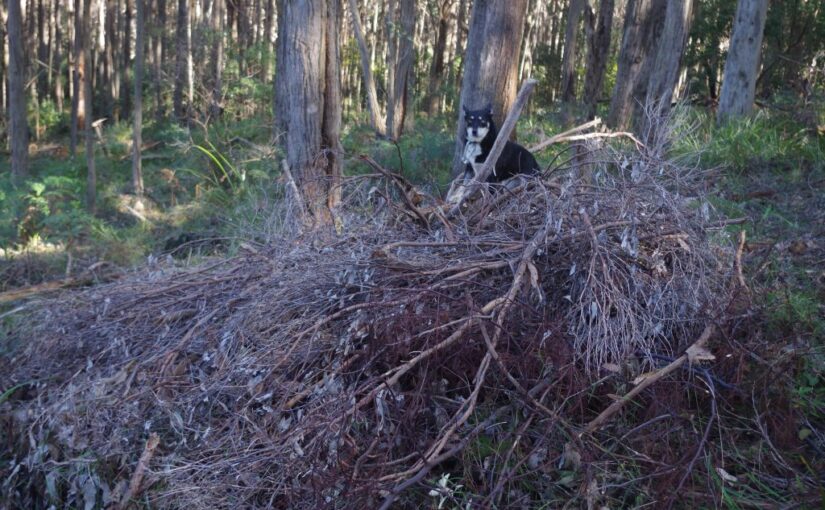The bloke was a bit taller than me, and maybe a few years older. Smoked like chimney. It would be nice if he didn’t smoke in the car. Probably my fault for bringing the complicated brake problem to his business. The windows down, which is fun in the winter weather, eventually sent the smoke stink to the magical land of elsewhere. But then again, maybe not. Sandra commented upon the stale smell.
But the dude fixed the brakes on the dirt mouse Suzuki. The machine is now out of warranty. Yes, it’s been that long. Strange mechanical issues are my problem to get sorted out. It was one of the worst sorts of problems too, being intermittent. The rear drivers side brake would sometimes make this weird clicking sound when the brake pedal was depressed. It’s not a sound which inspires confidence, although as anyone who has ridden a motorcycle knows, most of the braking force comes from the front brakes. So hopefully it wasn’t a big problem. Maybe. Anyway, that’s why you find cheaper drum brakes on the rear of some cars. And the Suzuki had those drum brakes.
When I was a young bloke, not being flush with mad cash, and it being a recession and all, I did all of the servicing and repairs on my second hand motor vehicles. And being far from new, with no computer thingamedoos to make adjustments on the fly, those machines sure needed a lot of work. There were times you’d just be grateful the thing started, let alone returning home again in one piece. In those days, drum brakes could be adjusted using a screwdriver shoved in a hole in the wheel drum. You’d fish around with the screwdriver until you found the gear which turned, and then either tightened or loosened the brakes. Simple enough, unless you stuffed it up – then you’d have no brakes. Always an exciting prospect.
The mechanic and I had a good chat about what went wrong with the Dirt Mouse Suzuki’s brakes. Turns out it was an intermittent fault with a component called the ‘wheel cylinder’, and that’s the thing which exerts the pressure. Anyway, he made an interesting comment. He said that back in the day, the component would have been reconditioned using a kit which supplied all the essential parts. Nowadays, the component gets chucked out and replaced. I remembered the earlier days too, and it makes you wonder what skills have been lost.
This issue has been on my mind of late, and hits a bit closer to home. Regular readers will recall that late last year the farm machine repair shop boss suddenly died. It’s hard to even imagine the difficulties the business, let alone his family must have gone through. The other day, Sandra and I dropped off a very complicated mower at the business for a minor service. There were new faces at the counter, they seemed nice enough, and a new owner. Being country, we had a chat to them and left the mower there. Four weeks wait time with twenty machines ahead in the queue. A bit of quick maths suggests that they’re doing roughly one complicated machine per business day. That was a surprise given winter is meant to be the quiet time of the year, and my gut feeling tells me not to look in the workshop. Nope, best not to get involved. Changes aplenty for sure.
Once back home again, after a brief discussion, we made the decision where possible to perform most of the servicing and basic repairs for the various farm machines we use here. It wasn’t a hard decision to make, and if you’ve been reading for more than a few months, you can see that we’d already been heading down that path. The machine inspection pit we constructed many months ago now, was built for a reason.
It’s an odd feeling to have had support for a decade and a half from the farm machine repair dudes, only for the support to suddenly evaporate. Most of the mechanics there were older blokes, and they’d been talking about retirement, and for all I know, that’s what happened. It makes you wonder at the skills which have been lost.
That’s been on my mind this week, and it’s a bit overwhelming to take on a new responsibility like that. I just have to factor in the time to do the work. It’s not hard, and we’re pretty easy on the farm machines, so it’s more maintenance than repair, but even still.
Did a bit of work on the other ‘lesser’ low centre of gravity ride on mower during the week. And that work took my mind off the chicken problems. The chickens have been eating eggs. We’ve been lucky to get any eggs over the past few months – they’re eating them, all of them. That kind of defeats the entire purpose of keeping chickens, and there is no way they could blame their diet. They get fed a very diverse and protein rich feed, let alone fresh greens, every day. This one has come down to a poultry mental health issue. And I guess over time, one chicken taught several others to eat eggs. Whatever will they think of next?
The chickens however should be far more worried about what I think of the issue. And what I think about the issue is not good. There are plenty of websites which will give you the nice, the good, the lovely folks advice as to how to thwart chickens egg eating tendencies. Then there’s reality. We’ve kept chickens for thirteen years, and some in this lot of chickens are dirty for the activity. It’s not right, they have to go. That’s the Chris school of advice with this problem.
Two chickens lost their heads last week. The egg eating continued, so one morning, we did a stake out on the hen house, CSI style. We stood to the side for an hour or two, and simply observed the goings on in the hen house where the eggs are laid. And when we finally caught the chicken doing the deed, we were both surprised. We hadn’t thought that particular chicken was doing the deed. There was no doubt though, and even less mucking around. A heavy knife did the deed, in front of the whole flock, and hopefully they got the message: Chris means business here, stop mucking around! And since then, there has only been one other eaten egg. Whoever did that is on notice, and perhaps they know that given there has only been one. I can only hope that this skill is now lost to them.

The winter has been relatively mild, but humid and wet. Some days, you can see the humidity hanging in the air.

When feeling a bit overwhelmed, I like getting the environment around me in order. During the week, when there was the chance, I fixed up a lot of minor things about the place which needed attending to. And then there was the pile of mess left by the tree dudes. The tree dudes are a bunch of Pacific Islander blokes who do work around the place from time to time. They haven’t been here for over half a year because I had a problem with the boss of the crew, which arose when he asked for a loan. I’m not a bank.
Anyway, maybe three years ago, there was a huge wind storm which swept in from the north east. The prevailing winds don’t generally arrive from that direction, let alone at gale force. Trees grow and adapt their root systems to brace themselves against the prevailing winds. The plants require energy to perform this feat, so bracing for winds from unlikely directions is a bit of a weak point. As you’d imagine, right across the central highlands area of the state during that wind storm, trees toppled down all over the place. The damage was very minor here, but higher up in the mountain range, houses were squashed and some parts of the forest looked, and still do look, as though a giant had been playing matchsticks with the trees.
The damage here was fairly minor because the bulk of the mountain range protected us from the worst of the wind storm. Even so, three trees were left leaning on very strange angles. Quite dangerous angles really. One of those trees fell down a few years ago. The tree dudes dropped the other 35m (115ft) dangerous tree, and the least dangerous of the three is still leaning ponderously and most likely will fall over sooner or later.

Observant readers will note that most of the trees in the above photo are pretty young. It’s likely they’re regrowth from the 1983 Ash Wednesday fires. The exception is the larger tree closer to Ollie, which is much older again and probably grew after the 1939 Black Friday fires. If you look closely at the trunk of the larger tree, the blackened marks are from the 1983 fires, which the tree survived. It’s worth noting that the larger tree stands alone, unlike the rest of the forest trees which are cheek-by-jowl, the most likely reason that tree alone survived.
Years ago I got the tree dudes to cut up the two fallen trees into discs so that I could split them into firewood at a later time. They also removed all of the smaller limbs and branches and chucked them into a pile. That’s not ideal, because the pile provides almost perfect snake housing. And we have the second deadliest snakes on the planet, so if the reptiles have any reason to be elsewhere than here, that’s cool. The pile had to go.
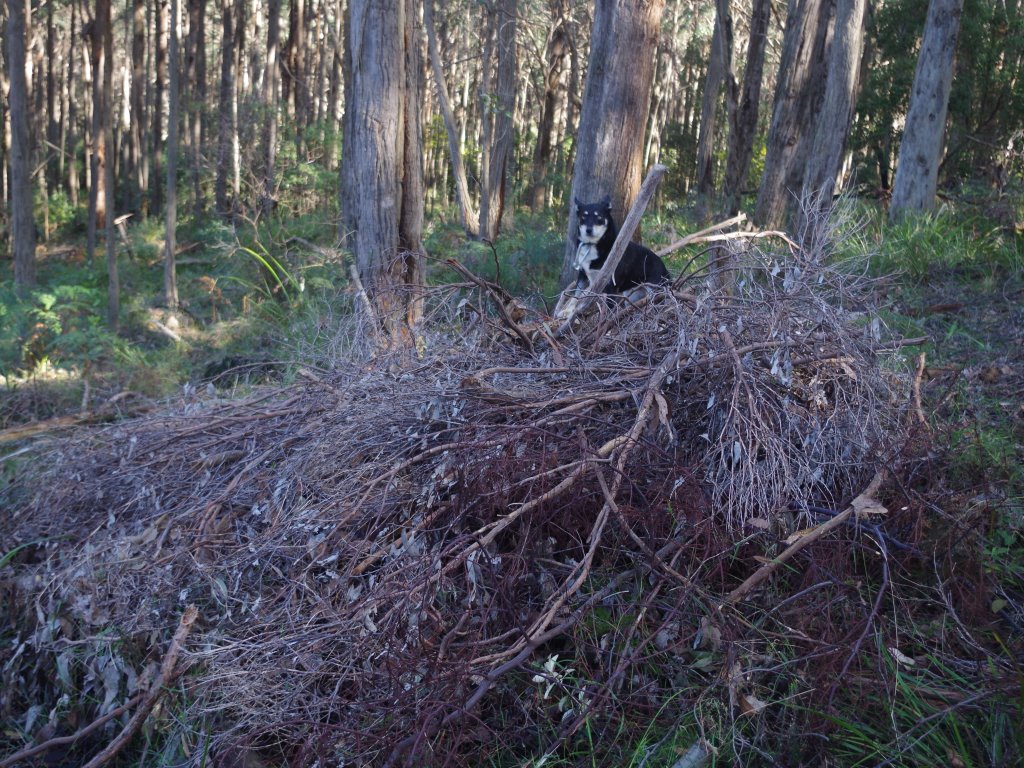
Fortunately we didn’t discover any snakes, and this is a good thing. The pile was burned off, but not where the tree dudes left the mess – it was too close to several trees for safety. Near to the pile was an old log left over by the loggers. I call those logs ‘Meg’s’, mostly because they’re big.
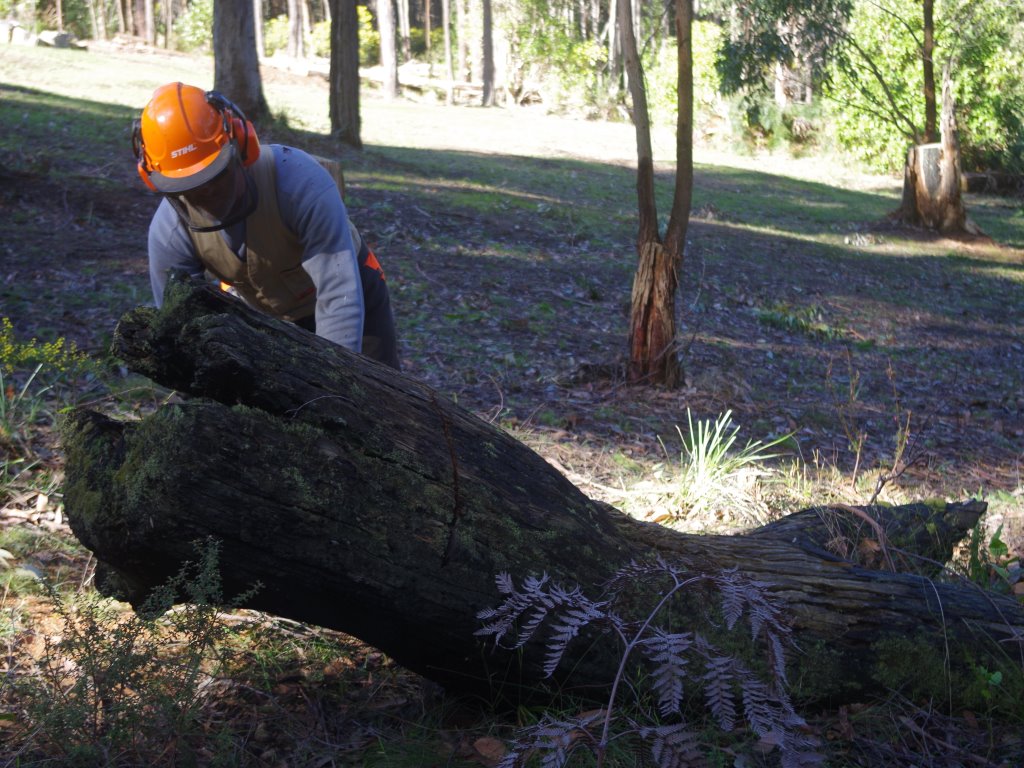
The Meg had probably been there since before the 1983 fires, because the log is charred and blackened over it’s entire length. The Meg was cut up into lengths about four feet long, which is heavy, but easy enough to roll. They were then rolled into a spot near to the pile which was deemed safer for a burn off.
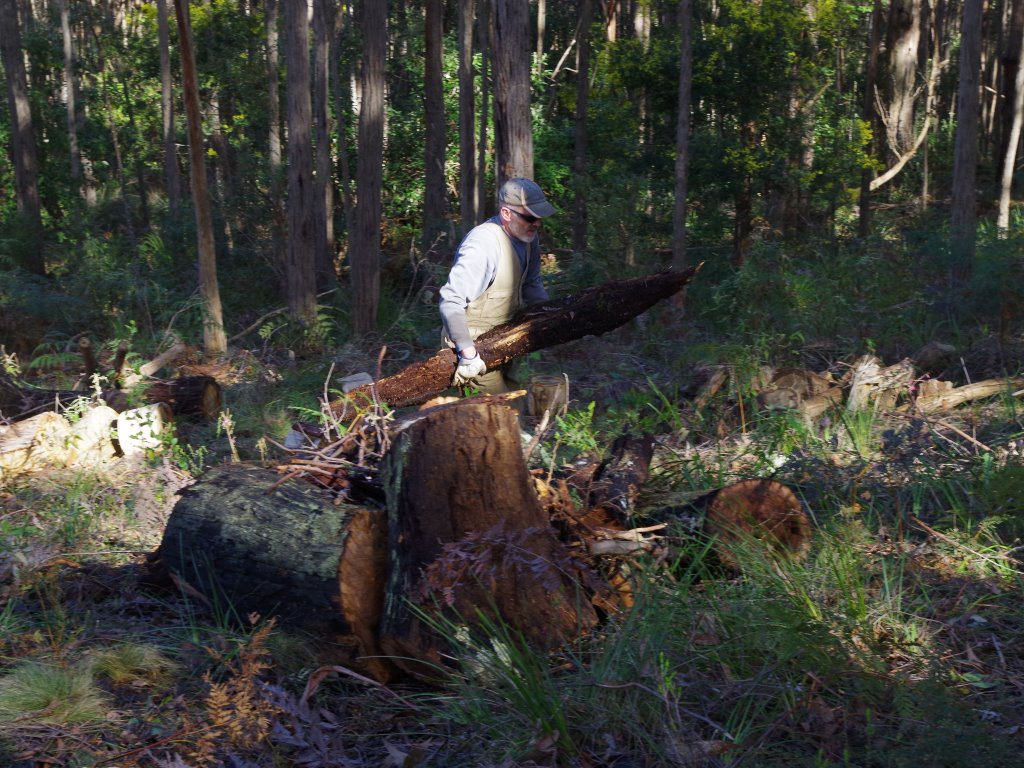
Despite how wet the logs and pile both were, the fire burned hot. You can only imagine how much hotter the fire would be in the summer months.
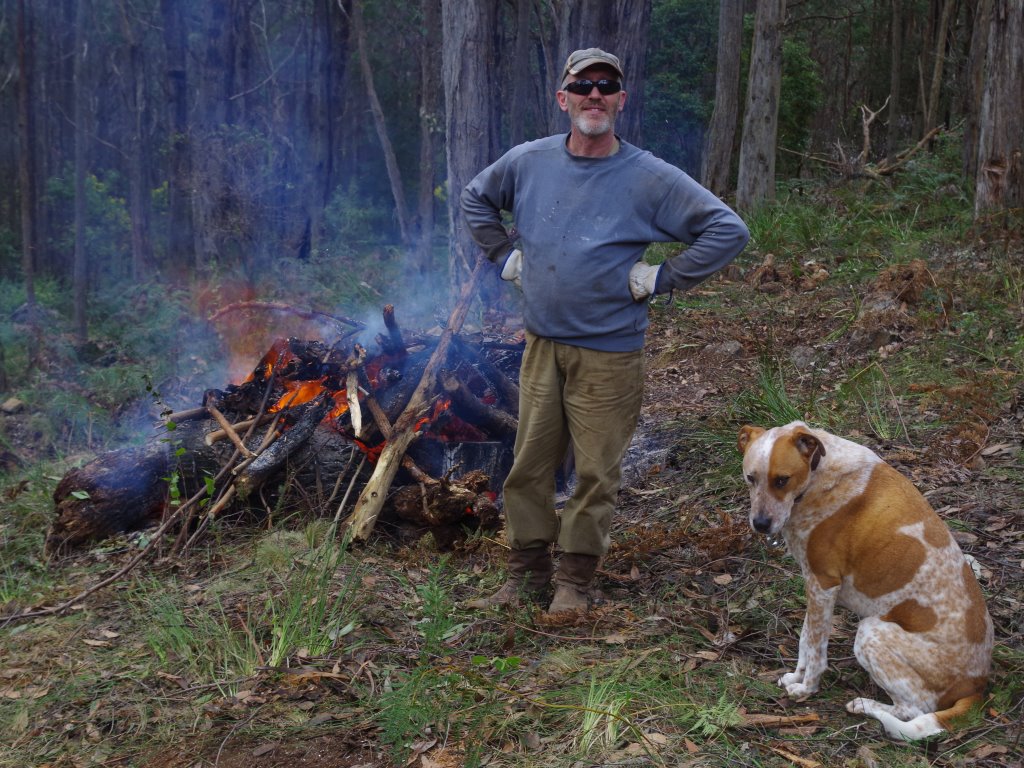
About a dozen ferns were planted around the new low gradient path project. The recent rains, combined with some sun have produced a lot of growth in the ferns.


We’re trialling a Red Wine Vinegar recipe, and also something known as a Kiwi Fruit Enzyme Extract. The extract is quite tasty.

The signs of the coming Spring are all about the farm. The recently planted out Tree Fern, has even begun to produce another frond.
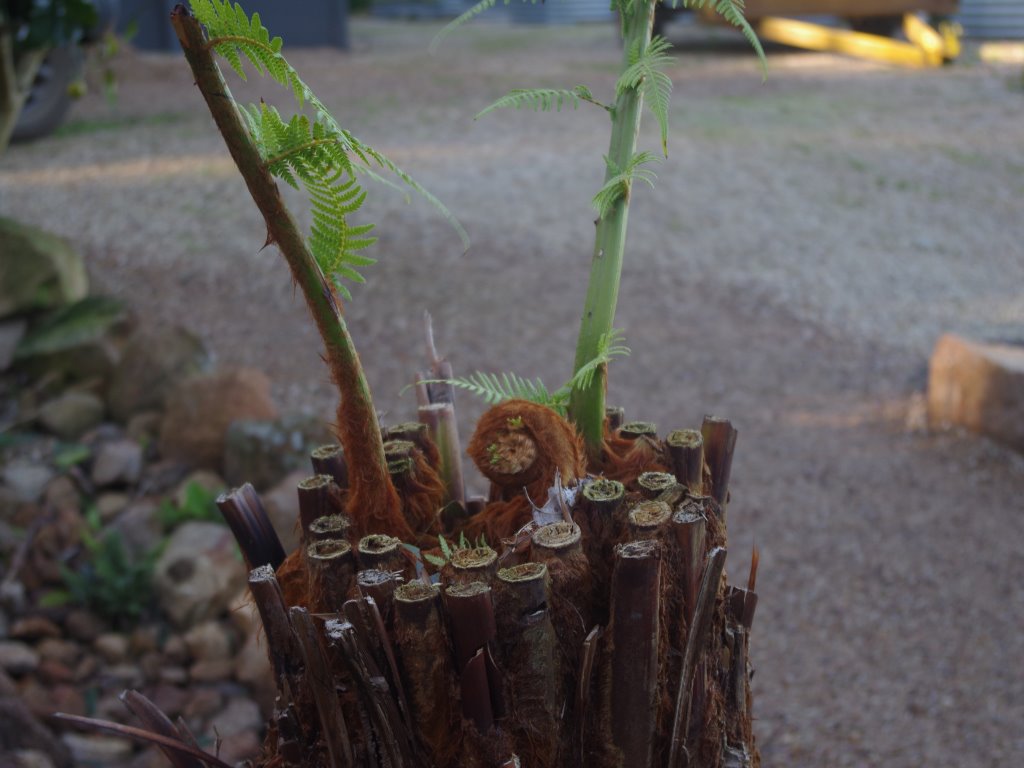
Onto the flowers:




The temperature outside now at about 9am is 7’C (45’F). So far this year there has been 558.2mm (22.0 inches) which is up from last weeks total of 542.4mm (21.4 inches)
